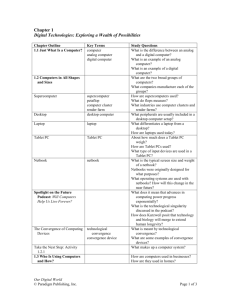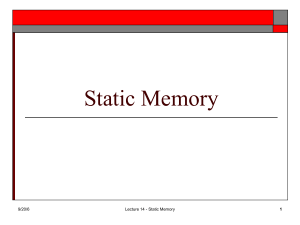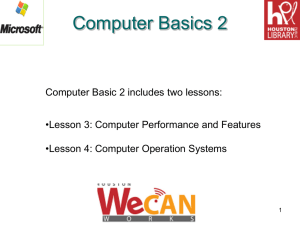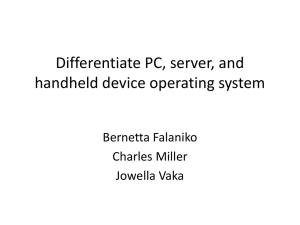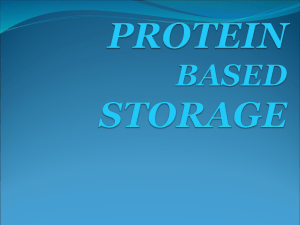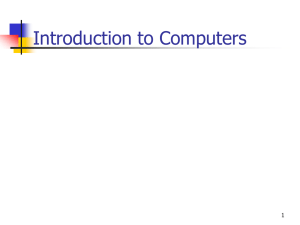Introduction to computer fundamentals
advertisement
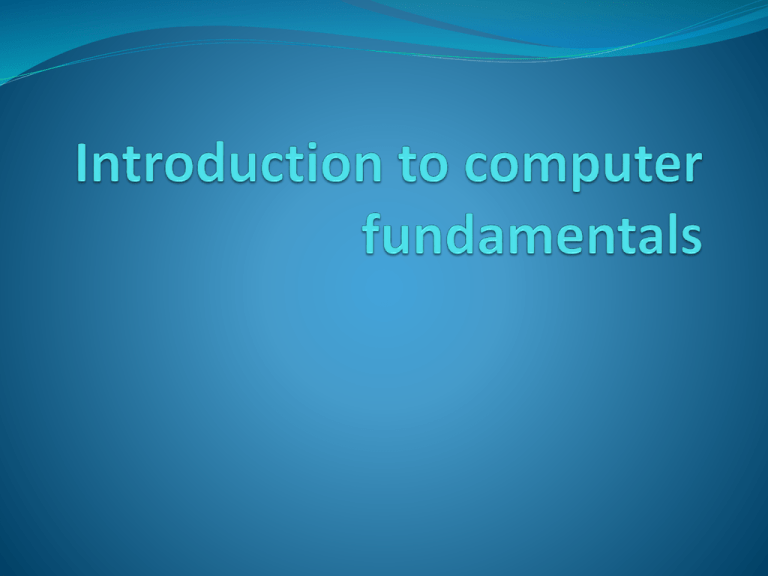
The Computer Defined A computer is an electronic device that processes data, converting it into information that is useful to people. Analog and Digital Computer Analog systems represent data as variable points along a continuous spectrum of values. Early analog computers were mechanically devices, weighing several tons and using motors and gears to perform calculations. Digital systems represents data as having one distinct value or another with no other possibilities. Digital computers are so called because they work by the numbers.That is they break all types of information into tiny units and use numbers to represent those pieces of information. Computers for individual users Most computers are meant to be used by only one person at a time.Such computers are shared by several people,but only one user can work with the machine at any given moment. Six primary types of computers Desktop computers Workstations Notebook computers Tablet computers Handheld computers Smart phones These systems are all examples of Personal Computers Personal computers are also called micro computers Desktop Computers The most common type of personal computer is the desktop computer…………….a PC that is designed to sit on a desk or table. These computers you see in schools ,homes, offices. These computers are used to communicate, produce music, edit photographs and videos, play sophisticated games and much more. Workstations A workstation is a speacialized,single user computer that typically has more power and features than a standard desktop personal computer. These machines are popular among scientists,engineer who need a system with grater than average speed and the power to perform sophisticated tasks. Workstations often have large high resolutions monitors and accelerated graphics handling capabilities. Notebook Computer Notebook computers as their name implies approximate the shape of an 8.5 by 11 inch notebook and easily fit inside a briefcase. People frequently use these devices on their lap they are also called laptop computers. Tablet PCs The tablet PC is the newest development in portable , full featured computers. Tablet PCs offer all the functionality of a notebook PC They are lighter and can accept input from a special pen called a stylus or a digital pen. Handheld PCs Handheld personal computers are computing devices small enough to fit in your hands. Personal digital assistant (PDA) is the type of handheld computers. Size of PDA is no larger than small appointment book and is normally used for special applications Displaying telephone numbers and addresses Taking notes Keeping track of dates or agendas Smart phones Some cellular phones double as miniature PCs These phones offer advanced features ,that’s way they are called smart phones These features can include Web service E-mail services Special software such as personal organizers Special hardware such as digital cameras or music players etc. Computer for Organizations Some computers handle the need of many users at the same time. The largest organizational computers support thousands of individual users at the same time, from thousands of miles away. Network servers Today,most organization’s network are based on personal computer Individual users have their own desktop computers which are connected to one or more centralized computers,called network servers. Large organizations may have dozens or hundreds of individual servers working together at the heart of their network When set up in such groups sometimes called clusters or server farms In these large networks different group of servers may have different purposes Handling printing tasks Enabling internet communications Accounting tasks Word processing Database management tasks Mainframe computres Mainframe computers are used in large organizations such as insurance companies and banks, where many people frequently need to use the same data. In a traditional mainframe environment,each user access the mainframe’s resources through a device called a terminal Types of terminal A dumb terminal An intelligent terminal A dumb terminal A dumb terminal does not process or store data It is simply an input/output device that function as a window into a computer located somewhere else. An intelligent terminal An intelligent terminal can perform some processing operations but it usually does not have any storage. The Parts of a Computer System A complete computer system consists of four parts Hardware Software Data User Hardware The mechanical devices that make up the computer are called hardware Hardware is any part of the computer you touch Software Software is a set of instructions that makes the computer perform tasks The term program refers to any piece of software. Data Data consists of individual facts or pieces of information that by themselves may not make much sense to a person. Tiny pieces of data in various form is actually the useful information. Users People are the computer operators, also known as users No computer is totally autonomous The information processing cycle A computer converts data into information by performing various action. During performing a mathematical operation on two numbers,then display the result.This is called the information processing cycle. The information processing cycle has four parts Input Processing Output storage Essential Computer hardware A computer’s hardware devices fall into one of four categories Processor 2. Memory 3. Input and Output 4. Storage 1. Processing devices The processor is like the brain of the computer It organizes and carries out instructions that come from either the user or software. Processor usually consists of one or more speacialized chips called microprocessors. Microprocessor is plugged into the computer’s motherboard Motherboard is an example of circuit board Many internal devices like sound card,video card,disk controller are attached to the mother board. Memory devices In a computer, memory is one or more sets of chips that store data and program instructions either temporarily or permanently. Random Access Memory The most common type of memory is called random access memory(RAM) RAM is like an electronic scratch pad inside the computer. RAM holds data and program instructions while the CPU works with them. When a program is launched it is loaded into and run from memory RAM is also called read/write memory RAM is made up of a set of chips mounted on a small circuit board. RAM is also volatile ,meaning that it lost its contents when computer is shut off. Read Only Memory Unlike RAM ,read only memory (ROM) permanently stores its data, even when the computer is off. RAM is called non volatile memory because it never lost its contents ROM holds instructions that the computer needs to operate. Input and Output devices Input devices accept data and instructions from the user or from another computer Out put devices return processed data to the user or to another system. The most common input device is the keyboard,which accept letters,numbers and commands from the user. Another type is mouse Examples of input devices The trackball and touchpad The joystick A scanner A digital Camera A microphone The function of an output device is to present processed data to the user The most common output devices are monitor and the printer Storage Devices The purpose of storage is to hold data permanently ,even when the computer is turned off. Storage as an electronic file cabinet and RAM as an electronic worktable. When you work with a program or set of data,the computer locates it in the file cabinet and puts a copy on the table. What is storage and memory There are three major distinctions between storage and memory There is more room in storage than in memory Contents are retained in storage but not in memory Storage devices operate much slower than memory chips Two types of storage Magnetic storage Optical storage Magnetic storage There are many types of computer storage but the most common is magnetic disk. A disk is round, flat object that spins around its center. Optical storage Every computer sold today includes at least one form of optical storage Devices that use lasers to read data from or write data to the reflective surface of an optical disc The CD-ROM DRIVE is the most common type of optical storage device An increasingly popular data storage technology is the digital video disc (DVD) end

